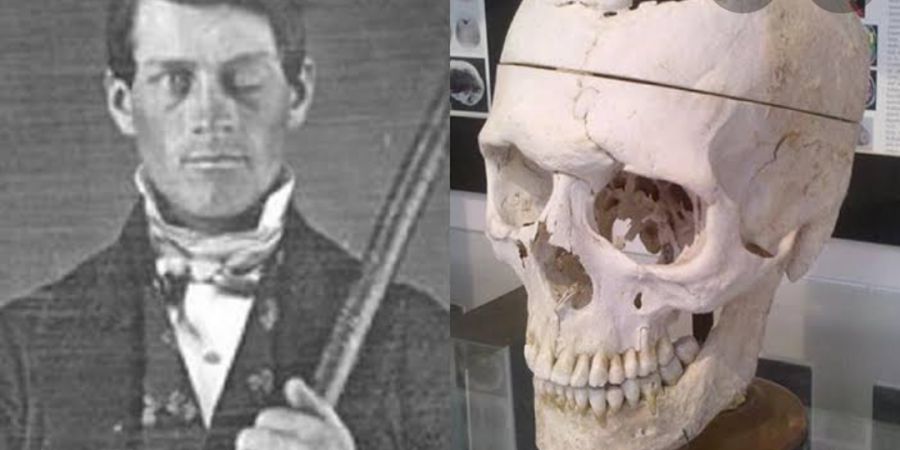

Phineas gage was an American railroad construction worker who met with an dreadful accident which changes his life completely for the next 12 years of life.
This case was known as American crowbar case and it lead the 19 century people to the discussion about mind and brain and particularly cerebral localisation.
Gage was extensively discussed in the curricular of neuroscience, psycology, neurology.
Gage before his accident was a perfectly healthy, strong and active young man of 25 years old. He worked in railway construction near New York. He was a normal man with a job and having a normal life.
On September 13 1848 gage was directing a work gang blasting rock while preparing the road bed. Due to some underlying instance a iron rod 3 cm in diameter and 1.1 m long and weighing about 6 kg entered left side of gage face in upward direction, just in front of angle of lower jaw, it possibly fractured the cheekbone, it passed behind the left eye, through the left side of brain, then completely out of the the top of skull though frontal bone.
The doctor shaved his head, removed out all the blood clots , removed some foreign material and small bone pieces and covered it with adhesive straps, bandages and nightcap.
Begining of the post accident, first 12 days Gage was mostly semi - comatose, sometimes he would recognise his mother , uncle and friends and the other times he was delirious.
Pre accident Gage was hard working, responsible and favourite. After the accident months after recovery, when he was physically all right , he was not employed back to his work due to significant change in his behaviour. And this change was attributed by his doctor Harlow to the injuries to his left frontal brain.
He was physically fine, lost vision in his left eye and had obvious scars on his face and head he remembered most of the accident. But post the accident he became aggressive alcoholic and couldn't keep a job. He sustained no motor or speech impairment and his memory remained intact. He was “ no longer Gage” . Some describe him restless , disrespectful and unreliable.
After a series of epileptic seizures, Gage died on May 21 1860, almost 12 years after accident.
After 7 years , Gage body was exhumed and was again studied by Harlow. His skull is kept at the Harvard University school of Medicine.










